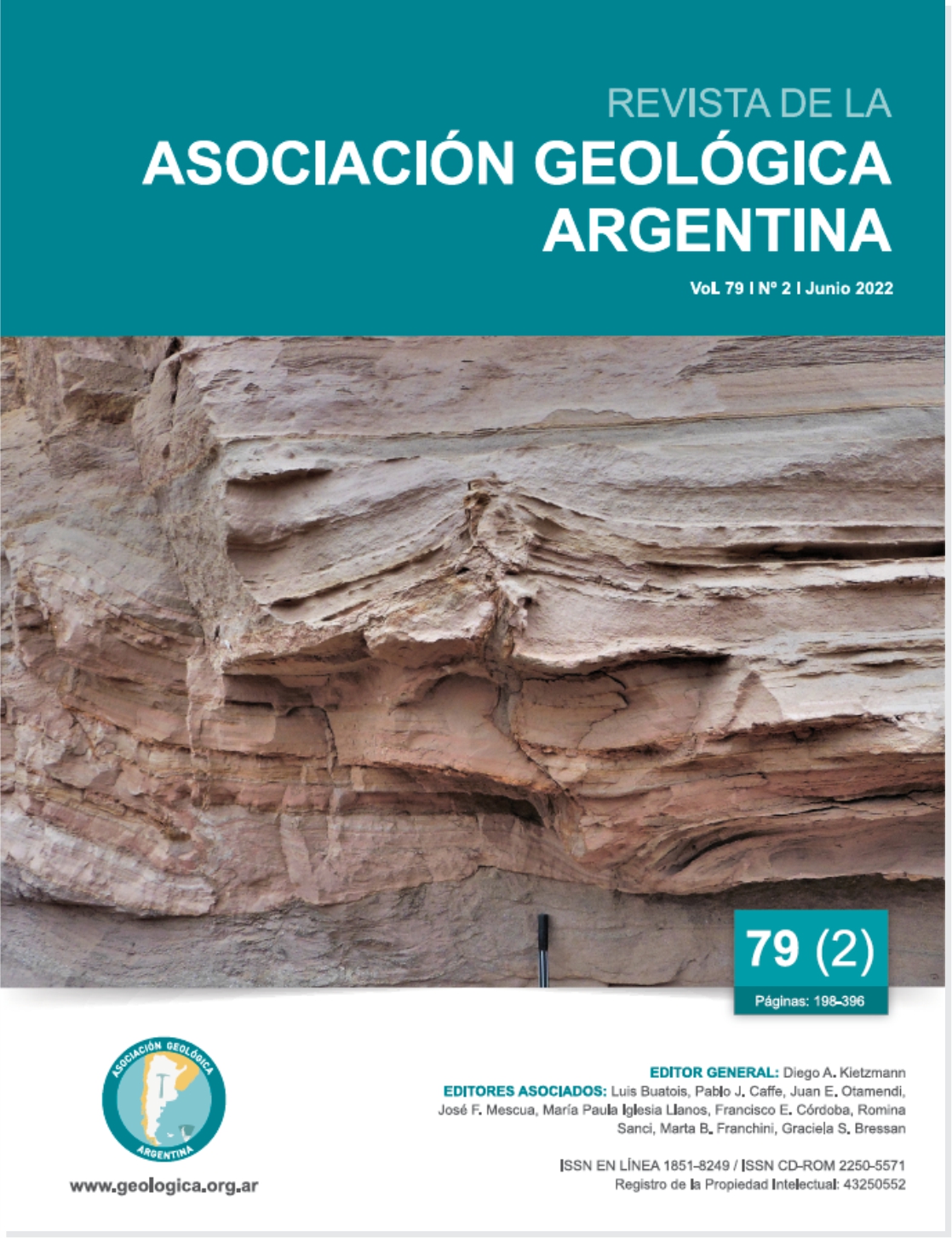Quaternary activity associated with the Santa Catalina fault between the eastern piedemont and plain of the Comechingones mountain range.
Main Article Content
Abstract
The neotectonic deformations associated with the uplift front of the Comechingones mountain range are concentrated in its western foothills, although analogous deformations associated with reverse motion faults located in the eastern foothills and on its border with the surrounding plain, such as the so-called Las Lagunas and Las Rosas, have also been detected. The objective of this contribution is to present neotectonic evidence confirming the quaternary activity of the Santa Catalina fault. Oblique aerial photos, description of natural profiles, a digital elevation models analysis, and the use of gravimetric and drilling information for water extraction among others, were the applied methods. The results obtained indicate that the Santa Catalina fault is a non-emergent reverse motion fault, responsible for the morphology generated by the Santa Catalina-Golf and Espinillos blocks, and for the modifications in the local drainage network. The deformations detected, folds and flexures among others, allow us to interpret that the Santa Catalina fault has had activity during the Quaternary and that it could represent the easternmost neotectonic deformations of the geological province “Sierras Pampeanas of Córdoba and San Luis” to this latitude of 33º South.
Article Details

This work is licensed under a Creative Commons Attribution-NonCommercial 4.0 International License.
Nota de copyright
Los autores conservan los derechos de autor y garantizan a la revista el derecho de ser la primera publicación del trabajo licenciado según una licencia de atribución Creative Commons que permite a otros compartir el trabajo con el reconocimiento de la autoría y de la publicación en la que se publicó por primera vez.
Declaración de privacidad
Los nombres y direcciones de correo electrónico introducidos en esta revista se usarán exclusivamente para los fines declarados por esta revista y no estarán disponibles para ningún otro propósito u otra persona.

